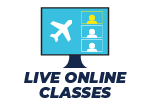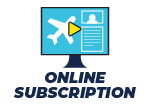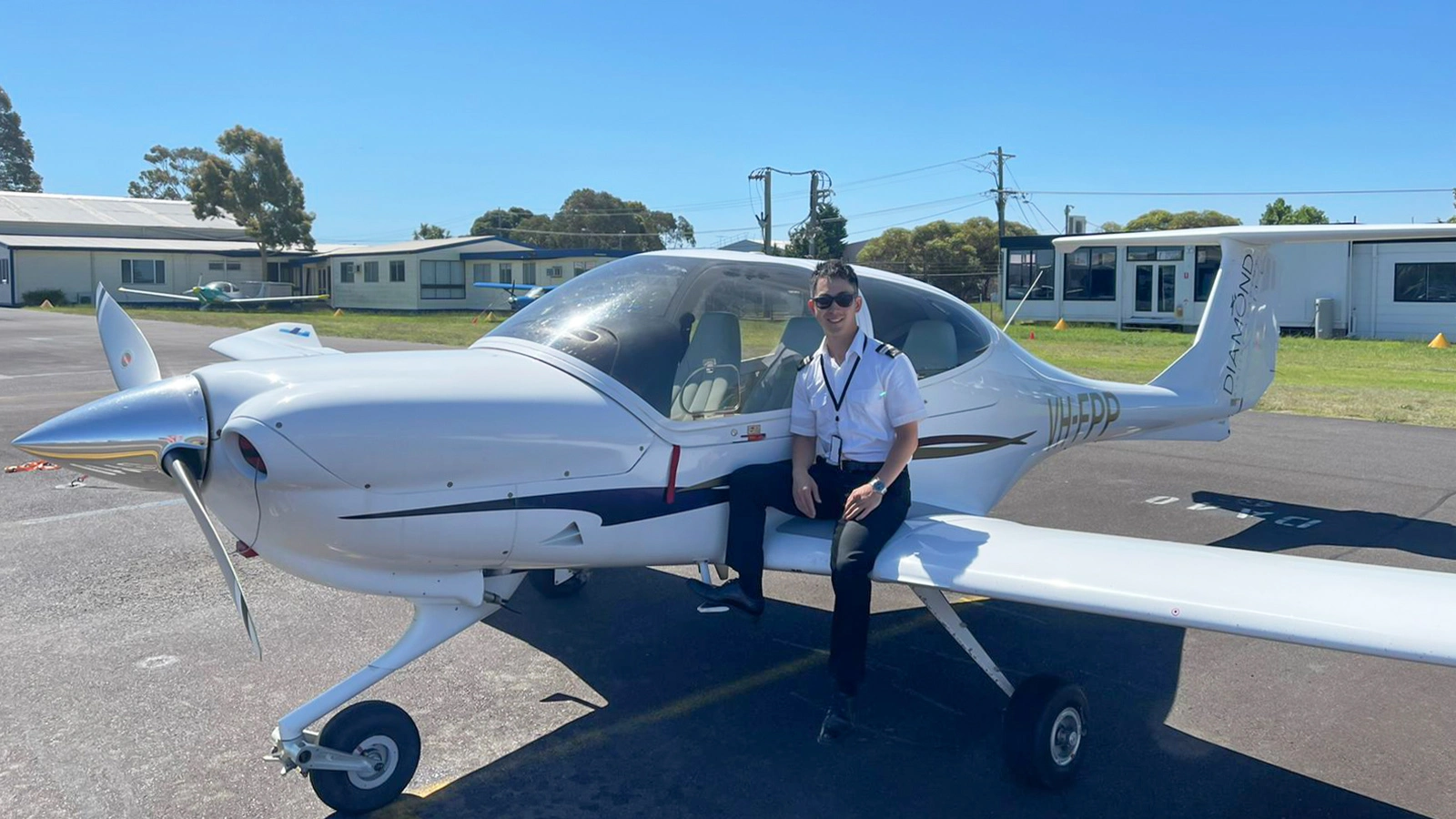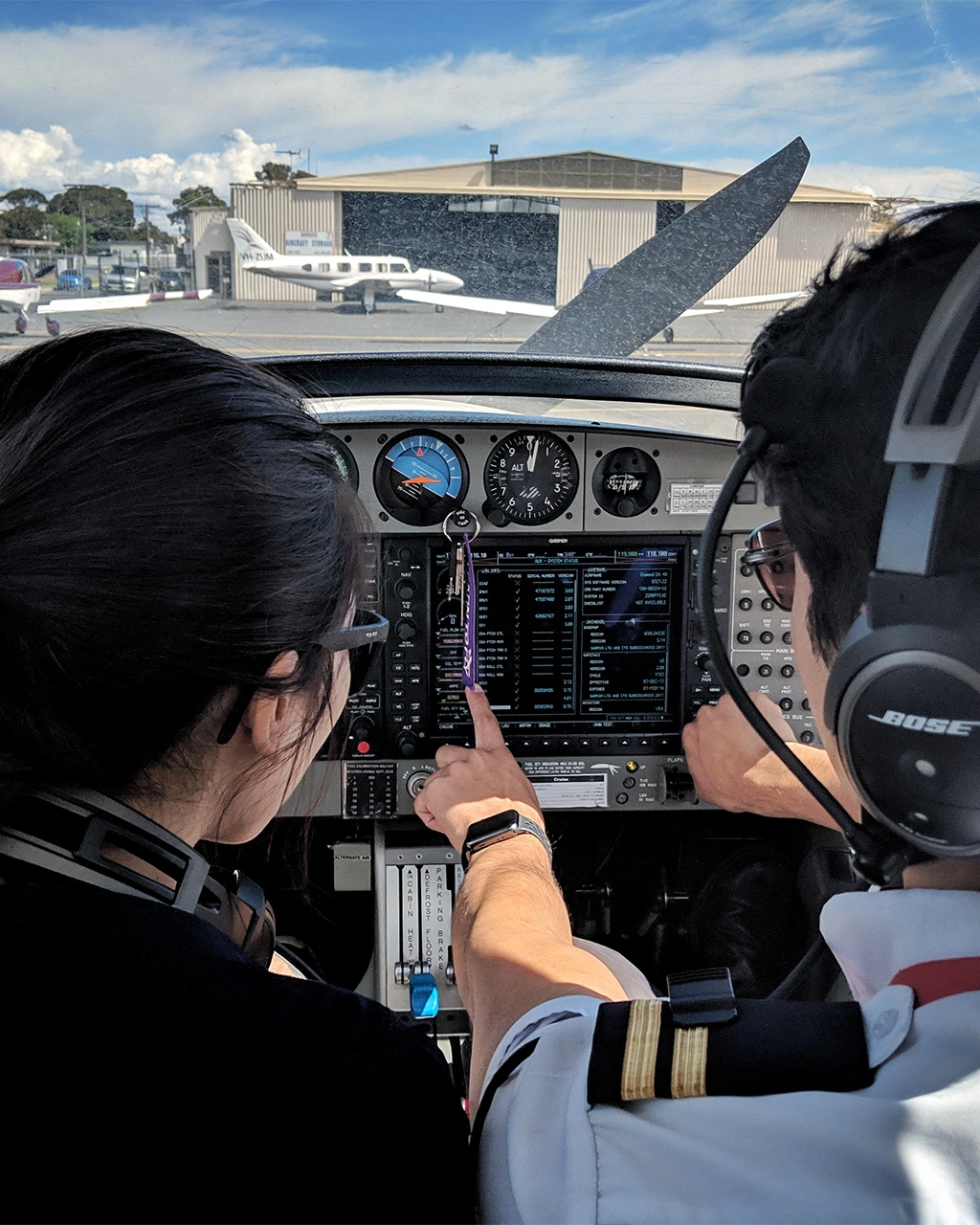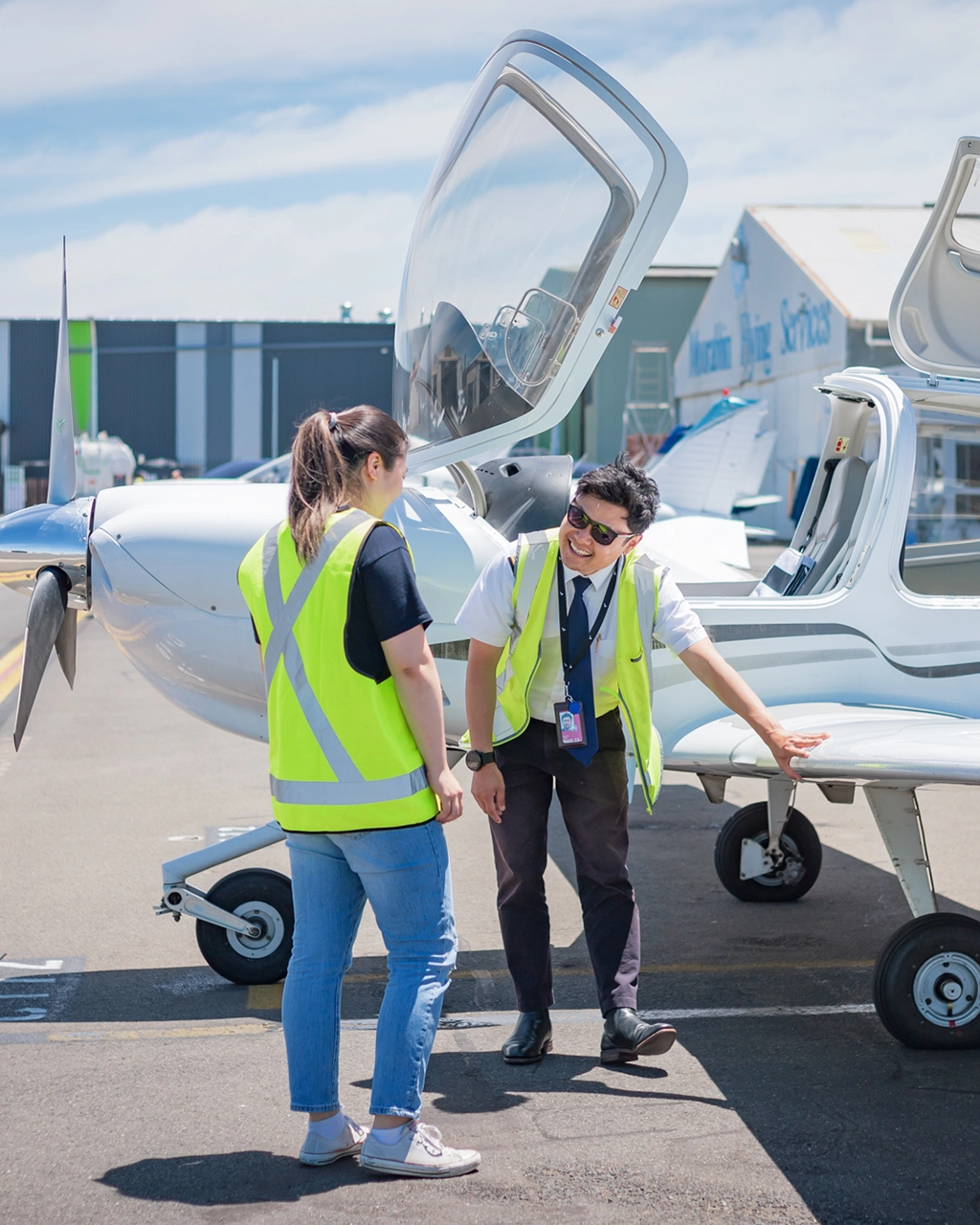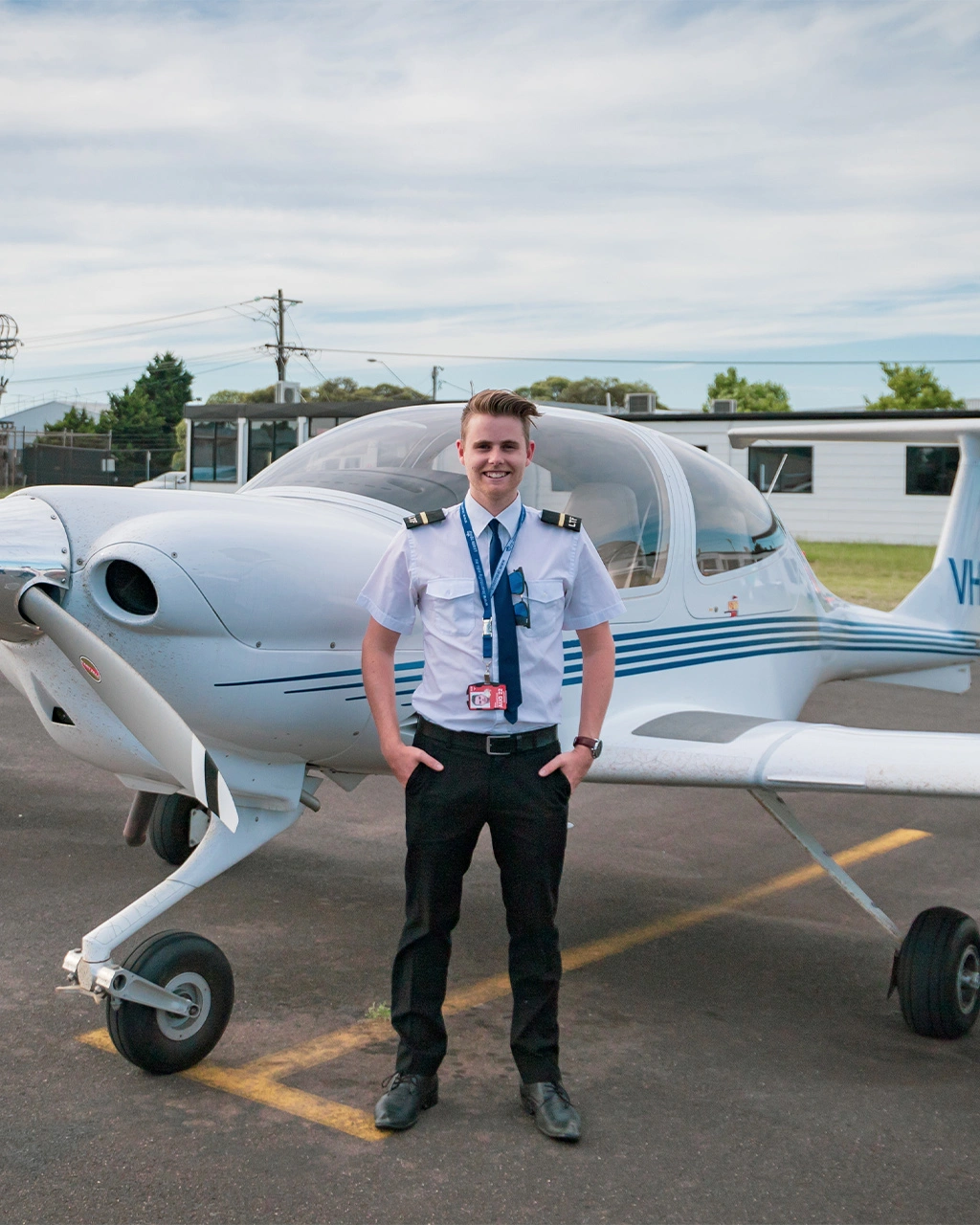
Learn Everywhere.
Commercial Pilot License (CPL) Theory Courses
Prepare For Your Career As A Pilot
A Commercial Pilot License (CPL) is the starting point for your pilot career. Building on the knowledge and skills you have perfected throughout your RPL and PPL training, during the CPL you will learn more advanced flight techniques and procedures in preparation for taking on professional work as a pilot. Our Commercial Pilot License (CPL) Theory course is conducted by experienced flight instructors, giving you the detailed preparation you need to be able to successfully pass your CASA exams and start your practical CPL flight training with a solid understanding of the required concepts. A solid knowledge base helps to save money in your practical flight training by reducing the need for extra flying hours.
Learn Wherever You Are
The CPL Theory course is offered in 3 different delivery methods, to cater for student pilots with busy lives or who are unable to attend our Moorabbin Airport training base in person. Our course options include:
1. Face to Face: Scheduled group classes taught at Learn To Fly’s state-of-the-art training facility in Melbourne, with another 3 additional instructor theory hours included;
2. Virtual Classroom: Scheduled group classes presented using the Zoom Meeting online platform, with another 2 additional online instructor theory hours included;
3. Online Subscription: All classes are available by a secured student portal to watch at your own pace, with discounted instructor theory hours available for extended learning.
-
1. Aerodynamics
This unit explores advanced aerodynamic theory including Bernoulli's Theorem and the Coanda Effect, as well as a more detailed insight into lift, drag, thrust, power, manoeuvres, effects of aircraft performance, stability, and aerodynamics design features
-
2. Meteorology
Advanced meteorological theory in the CMET unit looks at the composition of the atmosphere, heat, temperature, pressure and humidity, atmospheric stability, clouds and precipitation, visibility, winds, air masses and fronts, flight consideration, synoptic meteorology, weather services, and climatology.
-
3. Aircraft General Knowledge
The general knowledge component of CPL training includes power plants, aircraft systems, barometric flight instruments, gyroscopic flight instruments, aeronautical radiotelephony, radio waves, propellers, constant speed units, and undercarriage systems.
-
4. Human Factors
This comprehensive human factors unit covers health and fitness, alcohol and drugs, blood donations, hyperventilation, atmospheric pressure changes, vision, spatial disorientation and illusions, motion sickness, acceleration "g" effects, hypoxia, information processing and decision making, stress and fatigue, ergonomics, TEM (Threat and Error Management), and crew coordination.
-
5. Air Law
Advanced air law topics covered in the CLWA unit include documentation, flight crew licencing, flight rules and condition of flight, air service operations, aerodromes, airspace, altimetry, emergencies, accidents and incidents, security, airworthiness and equipment.
-
6. Navigation
Continuing from what you learned during RPL and PPL theory, you will develop a deeper understanding of the form of the earth, time in relation to aviation activities, charts and publications, navigational computations, pilot navigation and radio navigation.
-
7. Flight Planning & Performance
CFPA theory takes a detailed look at topics including density height, take-off and landing, climb, cruise and descent performance, weight calculations, loading, flight planning, ETP (Equal Time Point), PNR (Point of No Return), diversions, ALAs (Aeroplane Landing Areas), and fuel calculations.
Supercharged by Learn To Fly
Course Content
Every student pilot should enjoy flying. Learn To Fly is constantly creating resources to help students do just that. Not only modern aircraft, but also facilities, experienced instructors and curriculums to create magical learning experiences and make every moment of air time worth it.
See why there’s no better place to learn to fly.
Our Graduate
Kenny Won“Having a solid CPL theory foundation will not just help you to pass the exams – it will make you a better pilot. Sometimes things taught in the air might not stick in your mind as much because there are so many other things to focus on at that moment. The LTF instructors make sure students have a good understanding of every topic, and they even go beyond the syllabus to relate the content to real-life situations they’ve experienced as a pilot.”
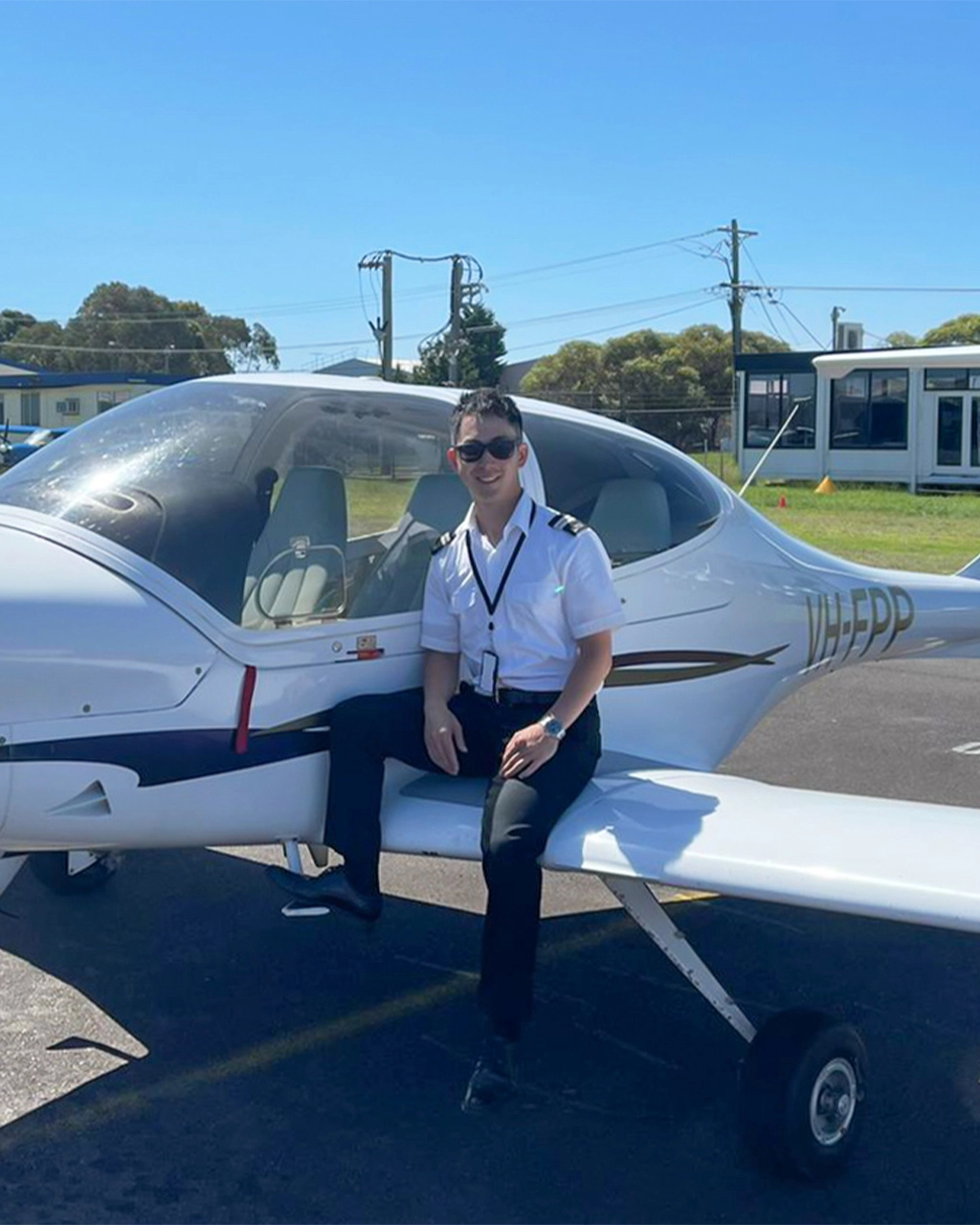
Start Your Flight Training Now.
Download Our FREE Course Guide
Our training program will support your learning and develop your flying skills in and out of the classroom. For detailed information on the course, including program introduction, prerequisites, training syllabus, fees and more, please download our FREE Course Guide.










